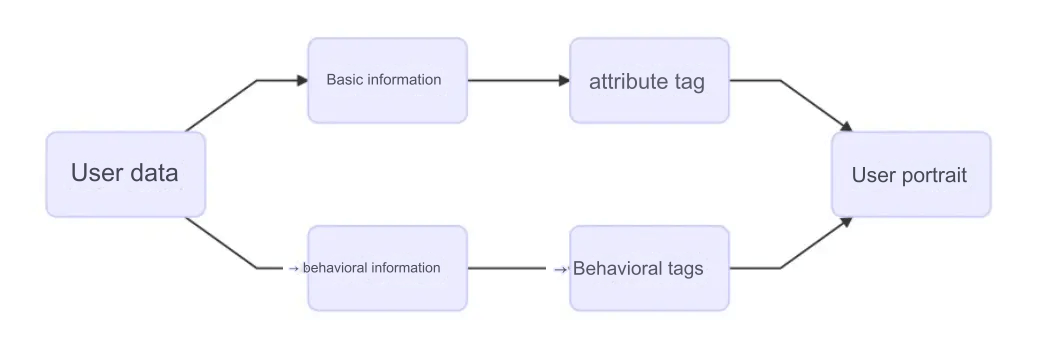For those working in marketing, understanding certain theoretical frameworks can greatly help in executing better marketing strategies. This article will introduce the AARRR model (Pirate Model and Growth Hacking Model), so let’s dive in.
To excel in marketing, it's essential to build a relevant theoretical knowledge system. This helps marketers better understand the market environment, consumer behavior, competitive landscape, and other complex factors, allowing them to create more effective strategies and guide practical marketing efforts for better outcomes.
Marketing theoretical models use specific frameworks or visual representations to illustrate key concepts. Their structured, visual nature allows us to grasp theories more effectively and provides an efficient thought path for understanding and analyzing complex issues, predicting market trends, or consumer behaviors. These models also make it easier for marketers to communicate with peers, using the same language and framework to address and solve problems, improving collaboration and reducing misunderstandings. All of this contributes to better marketing efficiency and helps marketers grow continually.
Therefore, mastering marketing theoretical models is very important for marketing professionals.
Over the years, marketing as a discipline has produced numerous theoretical models that have been refined and improved in practice. Well-known models like STP, Porter’s Five Forces, SWOT, 4Ps, AIDA, AISAS, and AARRR are already familiar to seasoned marketers. However, for newcomers or those who haven’t focused much on theory, the meaning and application of these models may still be unclear, as evidenced by many questions I’ve received on platforms like WeChat and Zhihu.
In previous articles, I’ve introduced models like STP, the Brand Lifecycle, the Business Model Canvas, and the Consumer Journey. I plan to continue sharing other common marketing models in future articles and look forward to discussions with interested individuals. Today, let's explore the AARRR model (Pirate Model and Growth Hacking Model).
1. What is the AARRR Model?
The AARRR model is essentially a user lifecycle model that focuses on five key stages of user interaction: Acquisition, Activation, Retention, Revenue, and Referral. It describes the entire process of a user learning about a product or service and becoming a loyal customer, corresponding to five stages in the product lifecycle.
The AARRR model was proposed by Silicon Valley venture capitalist Dave McClure in 2007. It is also known as the Pirate Model or the Growth Hacking Model.
The model is called the Pirate Model because it uses a pirate-like "plundering growth" metaphor to describe the process of user lifecycle development. It’s also referred to as the Growth Hacking Model because it’s an important tool for growth hackers—individuals who drive growth through data-driven marketing, market-informed product development, and technological strategies.
Specifically, the AARRR model includes five key stages:
Acquisition: Attract users by recommending products they are interested in through data analysis.
Activation: Increase user engagement through optimized content, expanded communication channels, and emotionally engaging services.
Retention: Ensure users remain loyal and continue using the product after their first purchase, especially in the e-commerce context.
Revenue: Drive conversion by keeping users interested and ultimately leading them to make purchases.
Referral: Encourage users to share the product or brand with others, generating UGC (user-generated content) and recommendations that help grow the brand.
It’s important to note that marketing often also uses the AIDA model (Attention, Interest, Desire, Action) and the AISAS model (Attention, Interest, Search, Action, Share). These models, like AARRR, describe user behavior and the buying process but from different perspectives. While AIDA and AISAS focus on user actions, AARRR takes a product-centric approach, emphasizing how to stimulate user actions through the right methods.
Marketing theories aren’t always right or wrong. In practice, we can switch between different perspectives depending on the situation, combining these models for flexible application.
2. Why is the AARRR Model Important for Marketing?
In the internet age, with a surge of software products and services, the AARRR model has been applied by growth hackers and operations teams to drive user growth and business monetization with remarkable success, catching the attention of marketing professionals and being applied in a broader range of marketing practices.
As industrial production capacity continues to increase and information technology evolves rapidly, brand competition intensifies, and the media landscape is filled with infinite temptations and noise. To maintain a leading position and achieve sustained growth, brands need to capture and retain customers, strengthen loyalty, and balance commercialization, user loyalty, and brand building. The AARRR model offers a helpful framework and a clear, executable path for brands to achieve these objectives.
The AARRR model provides a comprehensive perspective that describes every key step in the user lifecycle tied to brand growth. By deeply understanding user needs and market trends, brands can create targeted strategies for each stage to improve user retention, conversion rates, and satisfaction, balancing rapid user growth with effective business monetization and brand building. This model helps fully tap into the value of the entire user lifecycle.
Data analysis plays a crucial role in modern marketing, and the AARRR model emphasizes the centrality of data in each stage of growth. Through data analysis, businesses can gain insights into user behavior, shape marketing strategies, track and evaluate marketing effectiveness, and continuously adjust their approach. This improves marketing resource efficiency and increases the success rate of marketing activities.
Moreover, the AARRR model, with its product development perspective, highlights the importance of user experience in brand growth. From the first user interaction, brands must leave a strong impression and continue delivering excellent user experiences. This drives departments like R&D, production, customer service, marketing, and sales to continuously improve product quality and service, ensuring user satisfaction and uncovering potential commercial value.
3. How to Use the AARRR Model to Optimize Marketing Work?
The AARRR model provides a framework for thinking and a path for execution, but how to apply it depends on the specific situation. Generally, for each stage, the following approaches can be considered:
Acquisition: Attract as many potential users as possible to engage with the brand.
Conduct market research and user surveys to identify the target audience, their needs, and interests.
Develop acquisition strategies, selecting suitable channels and promotion methods like social media ads, SEO, content marketing, and partnerships.
Regularly assess the effectiveness of these strategies using metrics such as Customer Acquisition Cost (CAC), user sources, and conversion rates.
Activation: Guide users to try the product and understand the brand fully.
Lower the barrier for entry, eliminate obstacles, and offer a good user experience.
Use strategies like easy-to-use interfaces, great customer service, clear usage guides, and engaging interactions.
Provide free samples, coupons, or encourage registration to deepen user engagement.
Retention: Keep users engaged and loyal to the product or service.
Regularly update the product, add new features, and provide excellent customer support to maintain interest.
Use email, notifications, and events to maintain long-term user interaction, and offer incentives like loyalty points or discounts to encourage frequent usage.
Build user communities to foster interactions and gather feedback to enhance user satisfaction and loyalty.
Revenue: Optimize pricing strategies and payment options to encourage users to pay for products or services.
Consider different pricing strategies, such as value pricing, competitive pricing, or tiered pricing, to align price with the product's value.
Choose appropriate payment models like subscription fees, one-time purchases, or freemium models to meet different user needs.
Provide multiple payment options like credit cards, mobile payments, and clear payment processes.
Referral: Encourage users to recommend the brand or product to others.
Provide an outstanding user experience so users feel satisfied and motivated to share their positive experiences.
Establish referral programs and rewards to incentivize users to spread the word.
Use social media and word-of-mouth marketing to expand brand reach, using activities like prize-driven campaigns and hashtags.
4. Conclusion
The AARRR model offers a comprehensive and systematic marketing framework designed to help brands better understand users and build long-term relationships. The model focuses on the entire user lifecycle and aims to attract more potential users, improve user satisfaction and loyalty, increase revenue, and expand brand influence. Ultimately, this leads to sustained growth and success.
Therefore, understanding and applying the AARRR model is critical for the long-term development of a brand. Brands must focus not just on individual sales or promotional activities, but view their relationships with users from a higher-level, long-term perspective, using data-driven strategies to achieve marketing goals at different stages of the user lifecycle.







